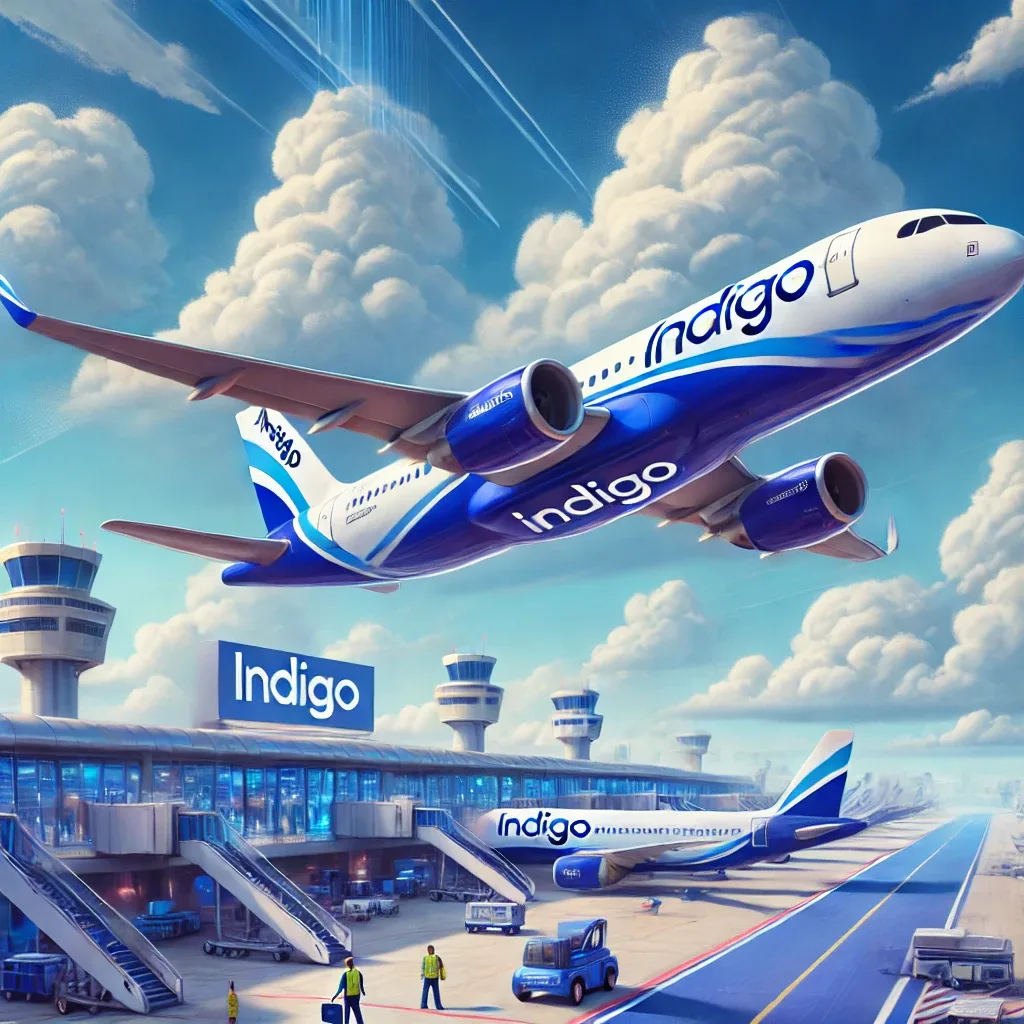IndiGo Airlines, operated by InterGlobe Aviation, has established itself as India’s largest airline, commanding a significant share of the domestic aviation market. Over the years, the airline has experienced various financial fluctuations, influenced by factors such as fuel prices, currency depreciation, and strategic expansions. This comprehensive analysis delves into IndiGo’s recent financial performance, major price trends, and the factors influencing its share price.
Recent Financial Performance
Q2 FY25 Performance
In the second quarter of the fiscal year 2024-25 (July to September 2024), IndiGo reported a consolidated net loss of ₹986.7 crore. This marked a significant downturn from the net profit of ₹188.9 crore reported in the first quarter of the same fiscal year. The loss was primarily attributed to higher fuel costs, increased airport charges, elevated aircraft lease expenses, and a seasonal downturn in demand. Additionally, aircraft groundings peaked in the “mid-70s” during this quarter, further impacting operations. To mitigate capacity shortages, IndiGo leased planes from external sources, including Boeing 737s from Qatar Airways, leading to increased operational costs.
Q3 FY25 Performance
In the third quarter of FY25 (October to December 2024), IndiGo reported a consolidated net profit of ₹2,448.8 crore, an 18.6% decrease from the ₹2,998.1 crore reported in the same period the previous year. The decline in profit was attributed to a shift in the festival season, which had boosted demand during the base quarter. However, revenue from operations grew by 13.7% to ₹22,110.7 crore, supported by a 12% increase in available seat kilometers (ASK) and a 13.5% rise in revenue passenger kilometers (RPK). The airline carried 27.325 million passengers, commanding a market share of 63.8%, compared to 24.31 million passengers and a 62.1% share a year ago.
Major Price Trends
Share Price Movements
IndiGo’s share price has experienced notable fluctuations in recent months. In October 2024, following the announcement of its first quarterly loss in two years, the airline’s shares fell by 8%, marking the worst session since March 2022. The stock plummeted as much as 13.4% to ₹3,780 earlier in the day. The loss was attributed to higher fuel costs and aircraft grounding-related expenses. Analysts from Investec and Elara Capital, who rate the stock as “sell,” expect the declining earnings trend to continue due to low fares and high costs.
Market Position and Expansion
Despite these challenges, IndiGo has been proactive in expanding its operations. By the end of March 2025, the airline plans to increase its international destinations to around 40, up from 26 two years ago. This expansion includes offering premium cabins on major domestic routes, marking a shift from its traditional budget airline image. The move aims to compete with global long-haul carriers and cater to India’s growing demand for air travel.
Factors Influencing Share Price
Several factors have influenced IndiGo’s share price in recent times:
1. Fuel Costs: Fluctuations in aviation turbine fuel (ATF) prices have a direct impact on operational expenses. Increases in fuel costs have been a significant factor in the airline’s financial performance.
2. Currency Depreciation: The depreciation of the Indian rupee has led to increased foreign exchange losses, impacting profitability.
3. Aircraft Grounding: Technical issues leading to the grounding of aircraft have resulted in capacity shortages and increased lease costs for replacement aircraft.
4. Operational Costs: Rising airport charges, maintenance costs, and other operational expenses have contributed to increased cost per available seat kilometer (CASK).
5. Market Competition: Intensifying competition in both domestic and international markets has influenced pricing strategies and load factors.
Conclusion
IndiGo Airlines continues to navigate a complex landscape characterized by operational challenges and strategic opportunities. While recent financial performances have been impacted by external factors such as fuel costs and currency fluctuations, the airline’s proactive expansion into international markets and the introduction of premium services indicate a strategic shift aimed at long-term growth. Investors and stakeholders should closely monitor these developments, as they will play a crucial role in shaping IndiGo’s future financial performance and share price trajectory.
Note: The financial data and events discussed are based on reports up to January 2025. For the most recent information, please refer to the latest official financial disclosures and market analyses.

